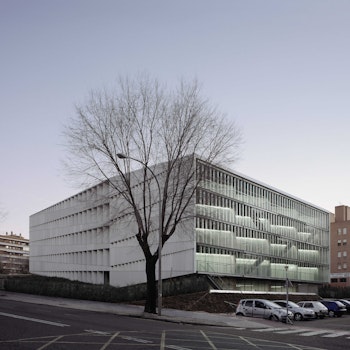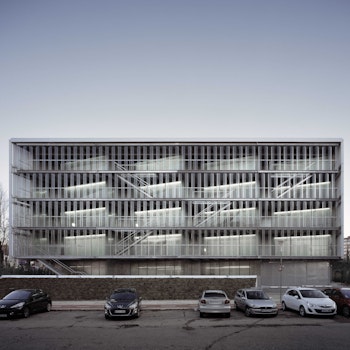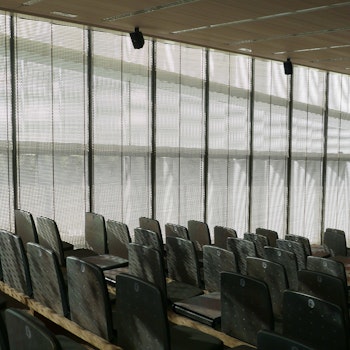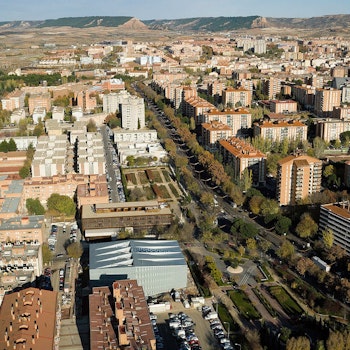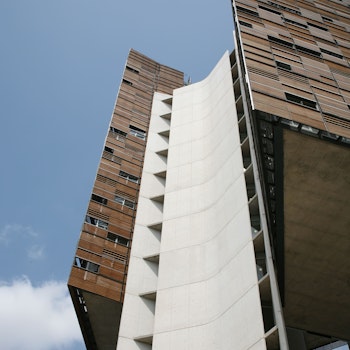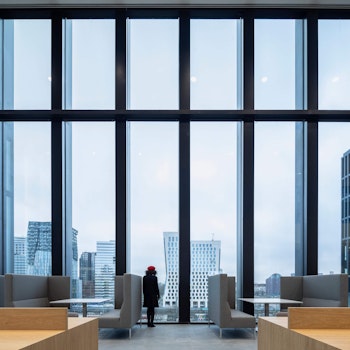ARCHITECT
ROJO / FERNÁNDEZ-SHAW
THE ARCHIVE AS CONTAINER
The project assumed the geometric and spatial character of the archive module file as a point of departure, giving rise to a regular, articulated and patterned structural system that maximizes the built volume and produces a compact construction with the character of a stacking: document stacking, stacked on shelves and, ultimately, of watertight store-chambers.
Based on this spatial organization, concocted and homogeneous, the proposal develops by superimposing four operations:
First, to adapt the orthogonal and homogeneous patterned structure to the gentle slope of the plot, resting lightly the building on the ground, avoiding the placement of any document-storage space under the ground level, and integrating the built volume into the natural topography of the plot and the city.
Second, to make independent the public from the personnel areas through access and level differentiation. Thus, each circulation route is endowed with its due presence on the outside while, inside, the movements and the circulations are rationalized.
Third, removing or emptying a full vertical cellblock on the front to create a space of prominent scale, transparent and representative, capable of dignifying the projection of the Archive on the public realm of the city, thus promoting integration in the urban environment at the same time that transparency towards the inside.
Fourth, superimposing a protective envelope, shaping in continuity the roof, the East and West facades, to order to enhance the image of a textile yet compact container, while facilitating an efficient climate control (indirect lighting, natural ventilation, and control of exposure to sunlight).
The metallic envelope, its textile geometry, and materiality assume the role of mediating between the opaque container and the urban building opened to its environment; between the Archive as 'safe box' and its social, cultural, and symbolic function in the city. Therefore, the surface is permeable and decorative, filtering the flow between the inside and the outside and connecting the architecture with its surroundings.
source: ROJO / FERNÁNDEZ-SHAW
YOU MAY ALSO LIKE

